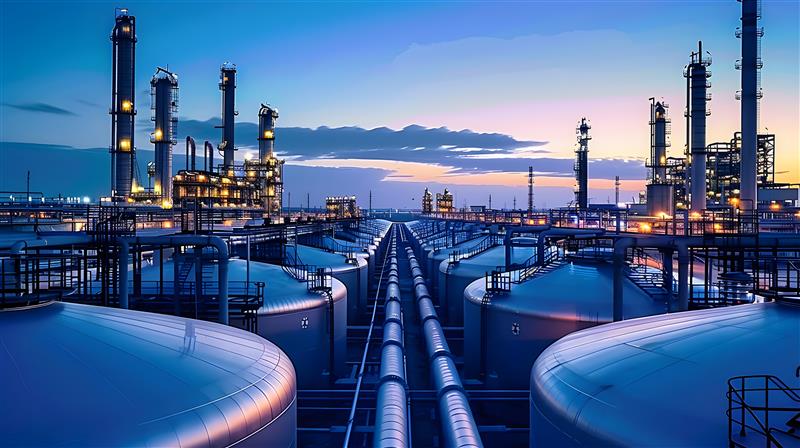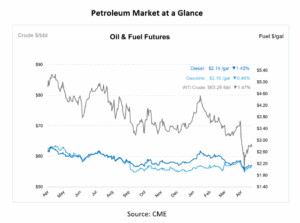
What’s That – Isomerization
In today’s competitive refining environment, operational efficiency and compliance with environmental standards are top priorities. One refining technique gaining renewed attention is isomerization—a powerful process that can help refiners unlock more value from their feedstocks while meeting tightening fuel specs. This structural modification increases the octane rating of gasoline components, making them more suitable for modern engines and reducing the need for harmful additives such as lead or benzene. As environmental regulations become increasingly stringent worldwide, there is a growing demand for cleaner-burning fuels and more sustainable refining practices, making isomerization a valuable solution. In today’s “What’s That Wednesday” article, we will break down what isomerization is and how it benefits the oil and gas industry.
What is Isomerization?
Isomerization has become an imperative chemical process in petroleum refining, involving the rearrangement of hydrocarbon molecules to enhance biofuel quality. By rearranging the structure of straight-chain hydrocarbons into branched isomers, refineries can dramatically increase fuel octane levels without increasing carbon count—a win for both performance and emissions compliance. This molecular rearrangement does not alter the number of carbon atoms in the molecules, but it largely improves their properties. Meeting the demands of stringent sustainability regulations, isomerization provides a sustainable pathway to produce gasoline that meets current performance and emissions standards worldwide.
The isomerization process typically involves the following steps:
- Feed Pretreatment: Impurities such as sulfur, nitrogen, and water are removed from the feedstock to protect the sensitive catalysts.
- Feed Fractionation: The hydrocarbon feed is separated to ensure the optimal composition for isomerization.
- Isomerization Reaction: The purified feed is passed over a catalyst in a reactor, where straight-chain hydrocarbons are converted into branched isomers under controlled temperature and pressure.
- Product Separation: The reactor output is cooled, and hydrogen and unconverted feed are separated and recycled.
- Stabilization: Distillation columns are used to purify the isomerized product and remove lighter gases.
Importance of Isomerization for Fuel Quality
In a market where every barrel counts, isomerization offers refiners a strategic tool to increase the value of light naphtha streams. The process upgrades low-octane molecules into premium blendstocks, reducing reliance on external octane sources and enhancing overall fuel pool quality. Key factors affecting fuel quality:
- Octane Enhancement: Isomerization boosts the octane number of light naphtha (C5–C6) by converting straight-chain paraffins into branched iso-paraffins, enhancing gasoline quality for better engine performance and reduced knocking.
- Catalysts and Reaction Conditions: The process uses bifunctional catalysts—typically platinum or palladium on acidic supports like chlorided alumina or zeolites—to promote molecular rearrangement under moderate conditions, optimizing yield and selectivity through balanced thermodynamics and kinetics.
- Feedstock Flexibility: Modern isomerization units can process various feedstocks, including hydrotreated light straight-run naphtha, natural gasoline, and even heavier LPG fractions such as n-butane, which can be isomerized to iso-butane for use in alkylation or MTBE production.
- Environmental and Regulatory Impact: Isomerization creates cleaner, high-octane gasoline with lower aromatics, sulfur, and nitrogen—helping refineries meet emissions standards and comply with strict environmental regulations.
Environmental and Economic Factors
Environmentally, isomerization holds an important role in reducing harmful emissions and improving fuel quality. The conversion of straight-chain hydrocarbons to branched isomers results in lower emissions of pollutants such as nitrogen oxides (NOx) and particulate matter, contributing to better air quality and helping refiners meet increasingly strict environmental regulations. Additionally, modern isomerization units utilize advanced catalysts that enhance process efficiency, thereby minimizing energy consumption and waste generation.
Economically, isomerization offers high-return benefits to refineries by increasing the value of products and optimizing operational costs. The production of high-octane gasoline and specialty chemicals like Food Grade Hexane (FGH) through isomerization can greatly boost refinery revenues, with some facilities reporting revenue increases of up to 25% after upgrading their units. Isomerization also supports cost optimization through innovations like catalyst regeneration, which can reduce production costs by more than half compared to single-use systems.
Is your refinery getting the most value from its isomerization unit? Mansfield Service Partners offers hands-on expertise in optimizing fuel quality, improving emissions profiles, and enhancing operational efficiency through our many products and service offerings. From refined fuels to lubrication, our team helps you turn technical complexity into commercial advantage. Reach out today to discover how we can support your operations.


